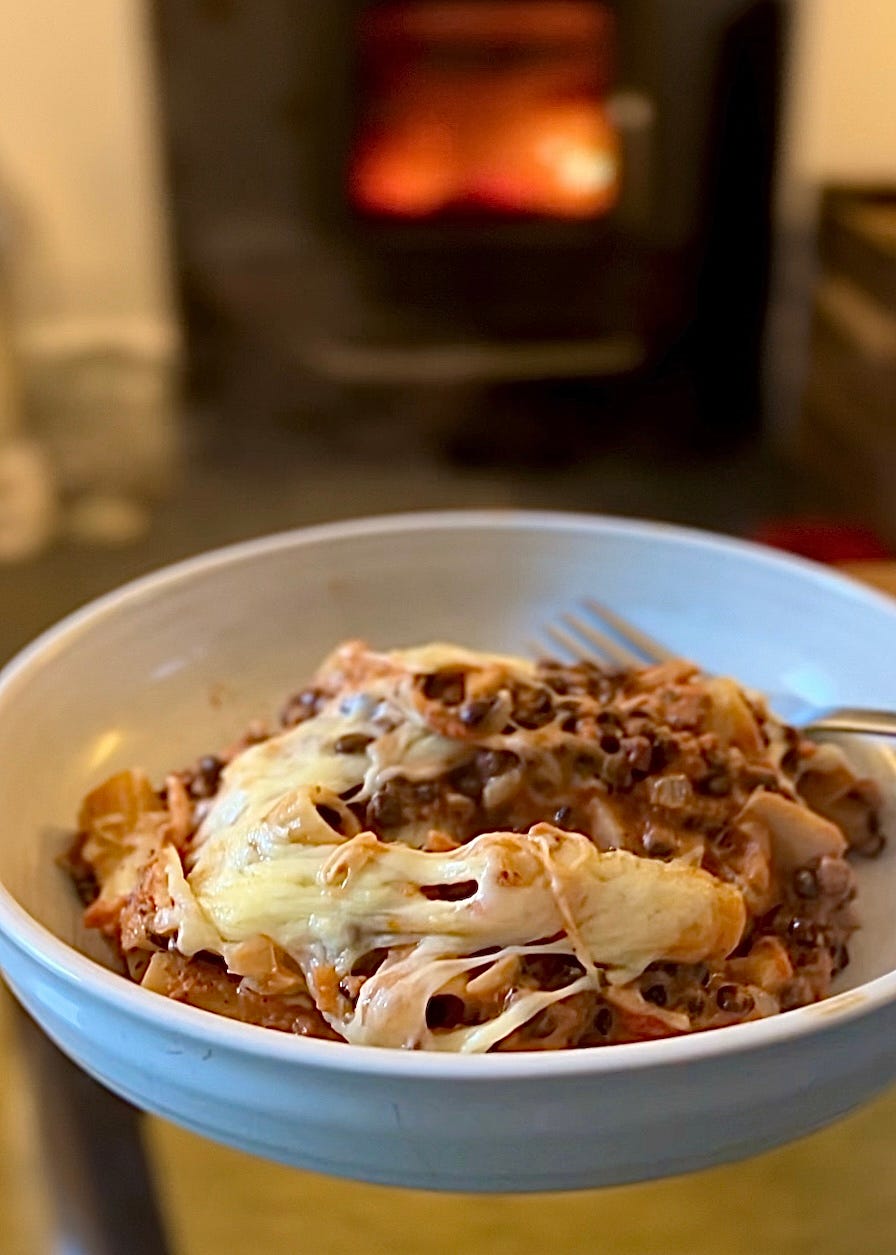Why do some recipes break the internet?
Plus, my veggie version of a recipe that had more than 92 million views on TikTok.
Have you ever wondered why certain recipes go viral on social media and others don’t? Why some catch the right edge of the perfect wave at the best time and end up riding a tsunami? For many people - I’m thinking specifically of food writers, but it applies to anyone on social media - getting the number of eyeballs that land on a post to soar exponentially is a dream ambition. And also, I reckon, a bit of a fool’s errand.
I’ve been thinking about this since reading Slate magazine’s carefully curated list of the 25 most important American recipes of the past 100 years. It was a curious list, and I don’t mean that disparagingly. It’s just that all the dishes on it are deeply embedded in American culture and therefore their significance and resonance is slightly lost on me, an Australian living in England. The dishes all earned their place by virtue of their impact in American kitchens rather than, necessarily, their culinary brilliance. According to Slate, they’ve all “profoundly and deliciously changed what Americans eat.”
Even from this distance, Caesar salad, Marcella Hazan’s tomato sauce and Jim Lahey’s no-knead bread clearly merit their badge. Not so much, for me at least, the green bean bake. Interestingly, at least one dish was there as a result of going viral on social media: Helen Rosner’s Roberto soup.
Rosner is the New Yorker’s brilliant food writer and columnist, and some years ago she explained the history of this hearty soup, which was so good she thought it deserved a name and so she gave it one: Roberto. Roberto was born more than ten years ago; Rosner gradually evolved and improved it over the years and eventually shared it with her newsletter subscribers. But its popularity suddenly “exploded” during lockdown in 2020.
Even Rosner was surprised. As she says, little about the soup is original. It’s basically a traditional Tuscan soup made hearty, in authentic fashion, with sausages and Parmesan. But it found the sweetest of sweet spots with her followers while everyone was at home and in need of comfort, and it went viral.
Rosner attributed the rapid outpouring of love for Roberto to Stories, at the time a new feature on Instagram. On Stories, posts are ephemeral, in the world for just 24 hours before vanishing into the ether. They don’t have the shiny life-at-its-Instagenic-best vibe of posts on the Grid. Rather, its take-me-as-you-find-me grittiness is perfect for people to post pictures of their dinner, including Roberto. At one point, Rosner’s phone was pinging ten or twenty times a day as followers shared her recipe on Stories. And when Stories are reposted, as is Instagram etiquette, they gather a momentum of their own. But what makes posts go viral in the first place?
Keep reading with a 7-day free trial
Subscribe to Pen and Spoon to keep reading this post and get 7 days of free access to the full post archives.





